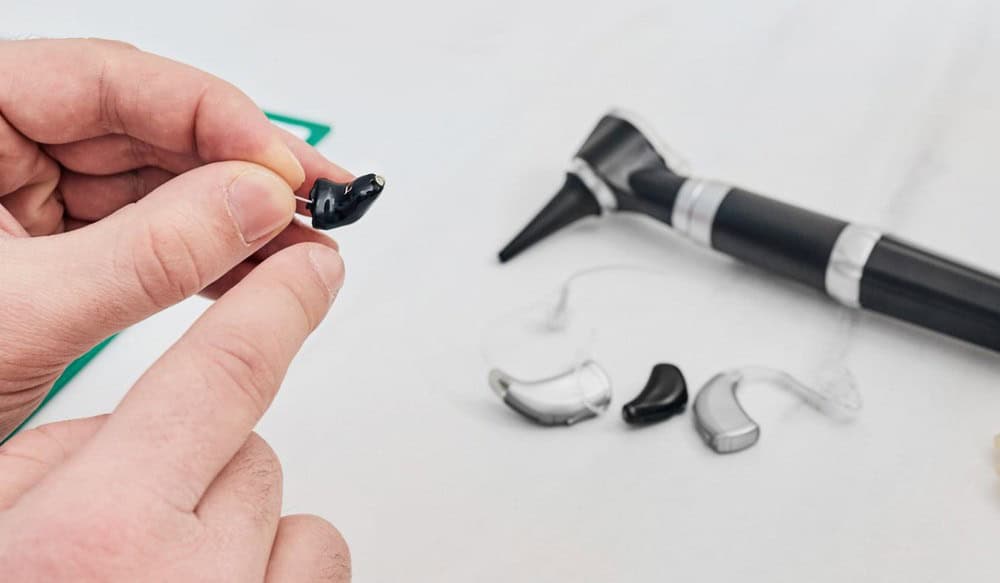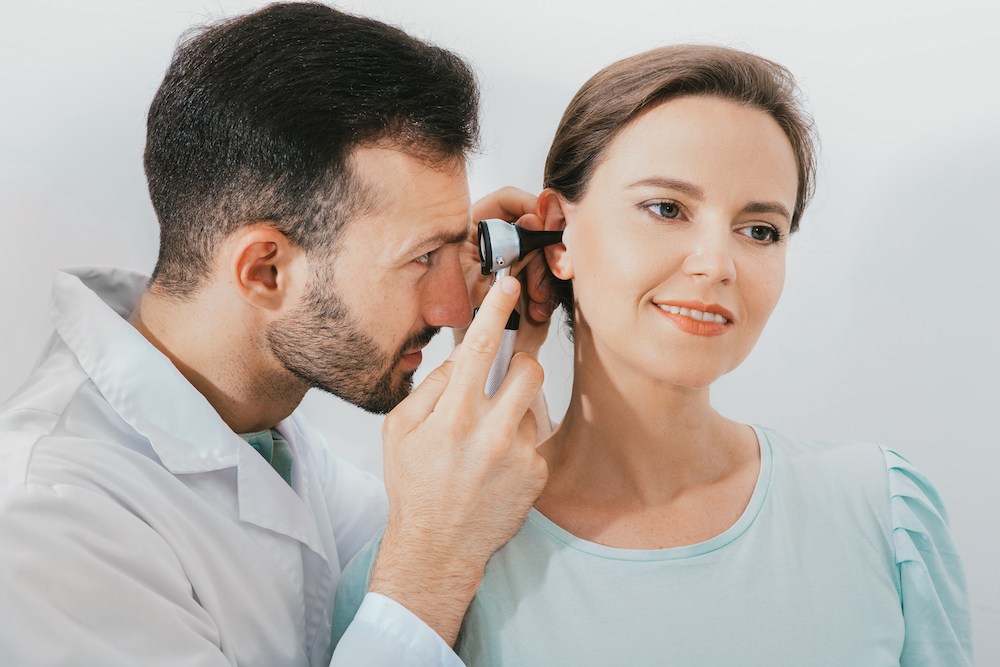The Importance of Early Detection in Childhood Hearing Loss
Children depend on their hearing for so much more than just following

By: admin | October 30, 2024
In the last few years, hearing aid technology has taken a big step forward with new mobile apps that let users control and customize their devices. These apps are changing how people use their hearing aids, making life easier and more comfortable. Picture yourself at a busy coffee shop, able to tweak your hearing aid settings without anyone noticing. Or imagine walking into a movie theater and quickly switching to the perfect mode for film audio.
For many people who wear hearing aids, these apps aren’t just cool tech – they’re tools that help them feel more in control and connected to the world around them. Whether you’re trying to hear your grandkids better during a video call or enjoy music more fully, these apps put the power to shape your hearing experience right in your pocket.
Hearing aids work by amplifying sound, making it easier for individuals with hearing loss to perceive speech and environmental noises. These small devices consist of three main components: a microphone, an amplifier and a speaker. The microphone picks up sounds from the environment, which are then converted into electrical signals. The amplifier boosts the strength of these signals, and finally, the speaker delivers the amplified sound to the ear. Modern hearing aids also use digital signal processing to filter out background noise and improve sound clarity, making conversations and daily activities more manageable.
Audiologists play a critical role in determining what technology and features should be incorporated into a patient’s hearing aids. Through comprehensive hearing tests, they assess the severity and type of hearing loss. This data allows them to customize the device with the appropriate amplification levels and features, like directional microphones, noise reduction or feedback suppression. Audiologists also consider the individual’s lifestyle needs – whether they are frequently in noisy environments or require connectivity to devices like phones or televisions. Tailoring the hearing aids to these factors ensures that the wearer gets the most out of their devices and improves their overall hearing experience.
The customization process matters because not all hearing loss is the same. Some people may benefit more from advanced features like Bluetooth connectivity, while others may need specialized adjustments for more severe hearing loss. Audiologists take these unique factors into account to ensure the hearing aids provide not only clarity but also comfort and ease of use. This personalized approach allows for a better quality of life, making it easier for individuals to stay engaged in conversations, enjoy entertainment and interact with the world around them.
Hearing aid apps are specialized mobile applications designed to enhance the functionality and user control of modern hearing aids. These apps, typically available for smartphones and tablets, offer a wide range of features that allow users to customize their hearing experience, adjust settings in real-time and access important hearing health data. By connecting wirelessly via Bluetooth, hearing aids and their companion apps work together seamlessly, giving wearers the ability to fine-tune their devices based on their environment or personal preferences.
One of the most valuable features of hearing aid apps is the ability to adjust volume, switch between different listening programs and modify settings like noise reduction or speech enhancement directly from your smartphone. This is particularly convenient for users who move through different environments throughout the day, like transitioning from a noisy outdoor setting to a quiet home. Instead of having to visit an audiologist for every adjustment or fumble with small hearing aid controls, users can easily tweak their hearing aids for optimal performance with just a few taps on their phone.
In addition to basic control functions, many apps also offer features like locating lost hearing aids, remote hearing checkups with an audiologist and tracking hearing aid battery life. Some even integrate with fitness trackers, offering insights into how your hearing interacts with your daily activities. With advancements in AI and data processing, these apps are increasingly able to learn from the wearer’s habits and adjust settings automatically to match specific environments. This level of customization ensures that wearers can experience the best sound quality, tailored to their individual needs, without needing to constantly adjust their devices manually.
Smartphones have significantly enhanced the way hearing aid wearers interact with their devices, offering a range of tools and conveniences that simplify day-to-day use. Through hearing aid apps, users can now adjust settings like volume, noise reduction and sound equalization directly from their phones. This eliminates the need to manually adjust the hearing aid itself, giving wearers more flexibility and control no matter where they are. Whether transitioning from a noisy restaurant to a quiet room or personalizing sound profiles for specific situations, these apps provide a level of customization that allows for a more seamless hearing experience.
Many hearing aid apps go beyond basic controls by offering advanced features like real-time sound monitoring and remote consultations with audiologists. These capabilities allow users to check their hearing aid’s performance and get instant support without needing to make a trip to the clinic. Some apps even provide troubleshooting guidance, enabling wearers to address minor issues themselves or communicate effectively with their hearing care provider. This kind of connectivity is especially beneficial for individuals who need ongoing adjustments, as it ensures that their devices are functioning optimally in various environments.
In addition to control and support, smartphone integration also enables enhanced sound processing features like geotagging, which automatically adjusts hearing aid settings based on location. For instance, a hearing aid might switch to a “restaurant mode” in familiar dining spots, optimizing speech clarity in noisy places. By pairing with smartphones, hearing aids become even more adaptable, allowing wearers to enjoy a more natural and comfortable listening experience across different aspects of daily life.
As we adapt to the digital era, mobile apps have become game-changers in hearing aid control. They’ve turned smartphones into powerful tools for managing hearing loss, making the experience simpler and more personal than ever before.
These mobile apps offer a variety of features that can be tailored to your specific needs. With a few taps on your phone, you can adjust volume levels, switch between listening programs and even monitor battery life. This gives you more control over your hearing health, promoting independence and enhancing overall quality of life.
The variety of hearing aid apps available today is quite impressive. These apps cater to a wide range of needs and preferences.
One challenge you might face is the overwhelming number of choices. It can be hard to determine which app will best suit your needs, especially if you’re not familiar with the technology. A good solution is to consult with your audiologist. They can provide valuable guidance on the best apps for your specific hearing aid model and personal requirements.
Furthermore, it’s important to remember that not all apps are created equal. Some offer more features than others, while some are easier to use than their counterparts. Take time to research and try out different options until you find one that fits your lifestyle and comfort level with technology. Your effort will pay off when you find an app that enhances your hearing experience and makes managing your hearing aids a breeze.
When choosing a hearing aid app, consider certain key features that can greatly enhance your experience. Firstly, the app should offer easy volume control for quick adjustments on the go. Secondly, it should provide multiple listening programs that you can switch between depending on your environment. Lastly, a feature to monitor battery life is important to ensure your hearing aids are always ready when you need them. Here’s a checklist for what to look for in a hearing aid app:
Next, you can optimize your hearing aid experience by tailoring your sound with mobile apps. It’s like having a personal sound engineer right in your pocket! With these apps, you can fine-tune settings to match your preferences and adapt to different environments. This level of customization offers an enhanced auditory experience, allowing you to interact with the world around you in a more comfortable and enjoyable way. Here’s a simple checklist: experiment with different settings, adjust according to your environment and enjoy personalized sound quality. It’s all about making the technology work for you!
Hearing aid apps have undoubtedly made managing hearing aids more convenient, but they also come with a few concerns. One of the main issues is the reliance on smartphones for control. While many people use smartphones daily, not everyone is comfortable navigating apps or troubleshooting technical issues. For older adults or those less familiar with mobile technology, this shift can be challenging, potentially causing frustration if they struggle to adjust their hearing aids as needed.
Another concern is the compatibility between specific hearing aids and smartphones. Not all hearing aids work seamlessly with every device, and some apps may not be available for all operating systems. This lack of universal compatibility can leave wearers feeling limited, especially if their smartphone isn’t fully supported by the app’s features. Furthermore, the need for frequent software updates and potential glitches could disrupt the connection, leaving the user without easy access to important controls until the issue is resolved.
Privacy and data security are also valid concerns. Many apps collect usage data to enhance functionality or provide personalized support, but users may worry about how that data is being stored or shared. Ensuring that hearing aid apps follow strict security protocols is essential to protect sensitive information. Users should feel confident that their personal data is safe when using these apps, without the risk of third parties accessing it without permission.
While hearing aid apps offer convenience and control, it’s important to consider safety measures and privacy factors. On one hand, these apps can provide personalized adjustments and real-time feedback. On the other hand, they may raise concerns about data security and personal privacy.
For those using hearing aid apps, here are a few actionable tips to ensure your safety and privacy. First, always download apps from trusted sources like the Apple App Store or Google Play Store. Second, check the app’s permissions before installing – it should only request access to necessary features on your phone. Lastly, read through the app’s privacy policy to understand how your data is collected, used and protected. Following these steps can help you safely enjoy the benefits of hearing aid apps while protecting your personal information.
Using mobile apps for hearing aid control and customization is indeed a game-changer. It’s a remarkable blend of technology and convenience that puts you in charge, offering exceptional control over your hearing experience.
At Rametta Audiology & Hearing Aid Center, our team is ready to guide you every step of the way. From helping you choose the right app to match your specific preferences, to providing hands-on assistance with app navigation – you can give us a call for all your needs at:
Tags: benefits of hearing aids, hearing aid repair, hearing aid styles

Children depend on their hearing for so much more than just following
By: admin | June 20, 2025

As parents, we want our children to experience all the joys of growing up
By: admin | February 18, 2025

In the last few years, hearing aid technology has taken a big step forward
By: admin | October 30, 2024
